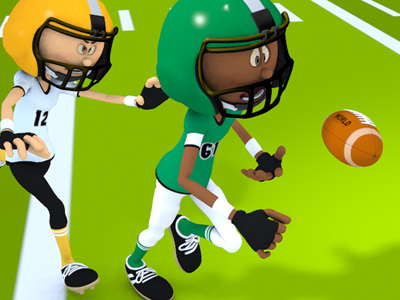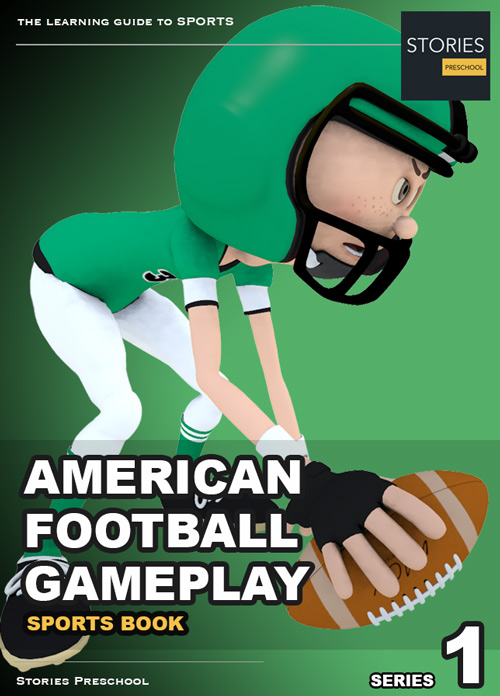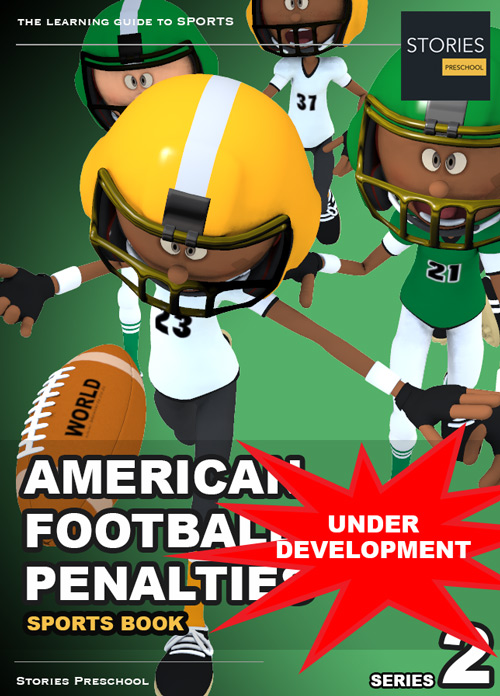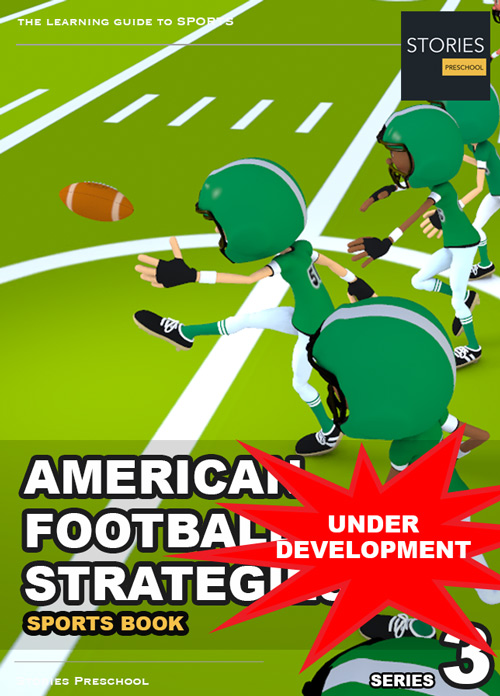American football

Equipment
Ball (gridiron football)
In Canada and in the United States, the term football refers to a prolate spheroid ball used in the context of playing gridiron football. Footballs are often made of cow hide leather, as such a material is required in professional and collegiate football.
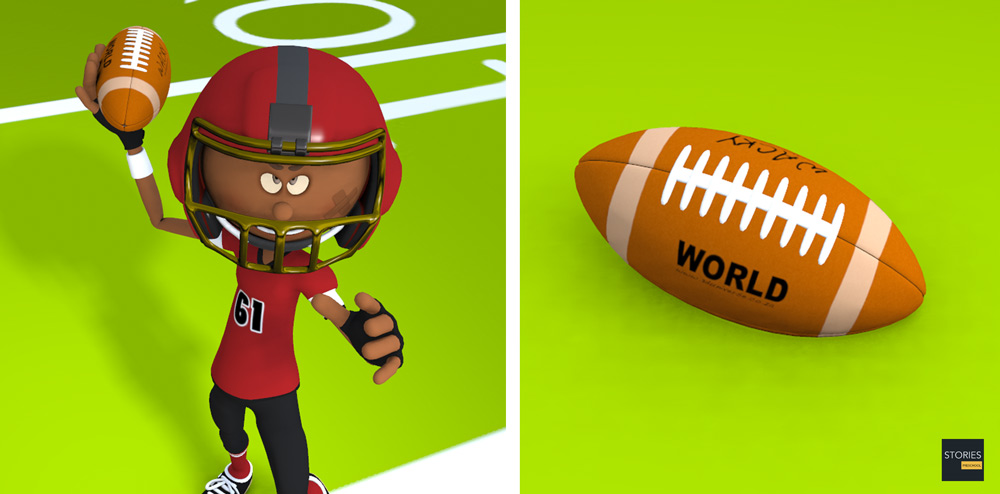
Footballs used in recreation, and in organised youth leagues, may be made of rubber or plastic materials (the high school football rulebooks still allow the inexpensive all-rubber footballs, though they are less common than leather).

History
In the 1860s, manufactured inflatable balls were introduced through the innovations of shoemaker Richard Lindon. These were much more regular in shape than the handmade balls of earlier times, making kicking and carrying easier. These early footballs were plum-shaped.
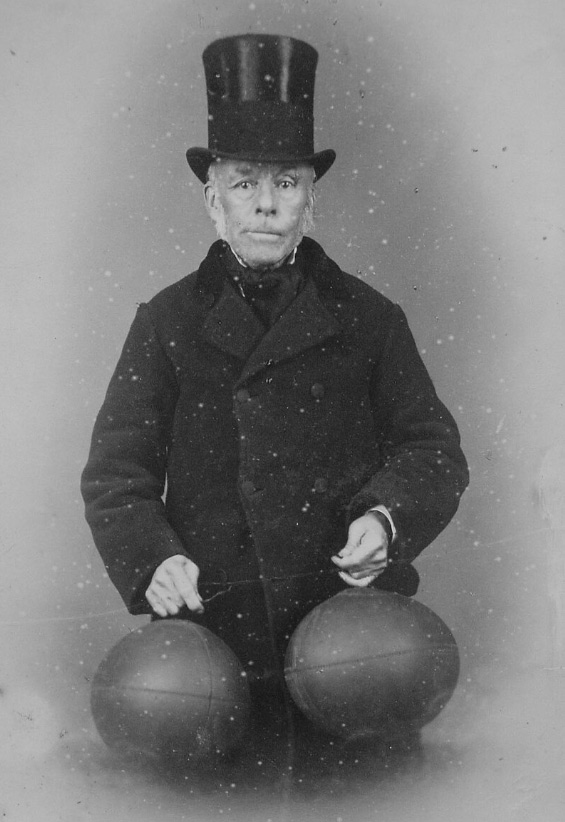
Some teams used to have white footballs for purposes of night practice. Georgia Tech back Judy Harlan once spoke of Joe Guyon, a full blooded Indian, and his antics: "Once in a while the Indian would come out in Joe, such as the nights Heisman gave us a white football and had us working out under the lights. That's when Guyon would give out the blood curdling war whoops."
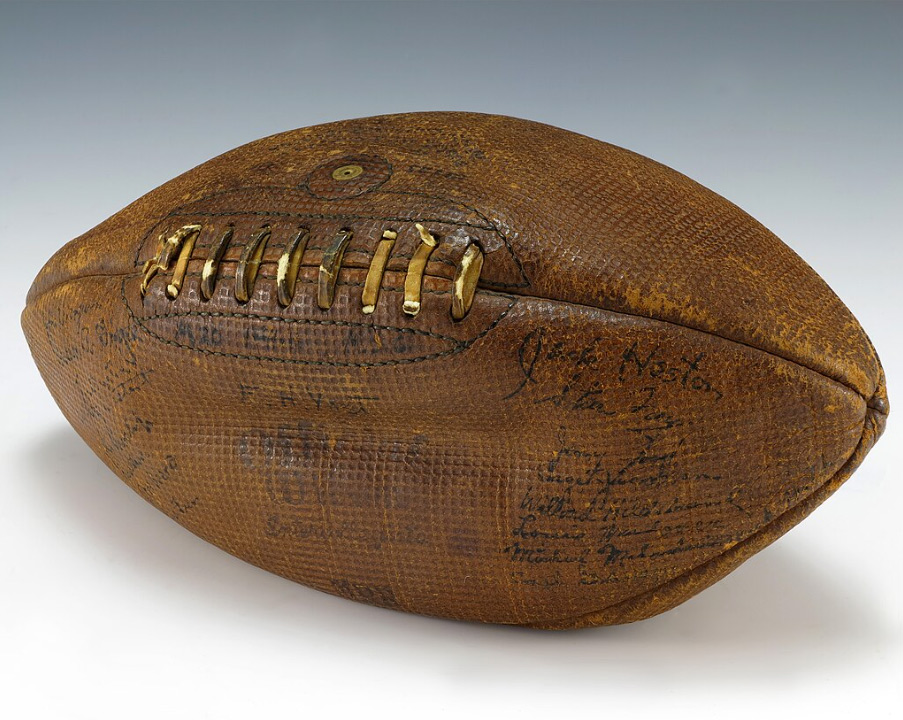
The football changed in 1934, with a rule change that tapered the ball at the ends more and reduced the size around the middle. This new, sleeker ball made it much easier to handle, particularly for passers.
Properties
Leather panels are typically tanned to a natural brown color, which is usually required in professional leagues and collegiate play. At least one manufacturer uses leather that has been tanned to provide a "tacky" grip in dry or wet conditions. Historically, white footballs have been used in games played at night so that the ball can be seen more easily; however, improved artificial lighting conditions have made this no longer necessary. At most levels of play (but not, notably, the NFL), white stripes are painted on each end of the ball, halfway around the circumference, to improve nighttime visibility and also to differentiate the college football from the pro football.
The leather is usually stamped with a pebble-grain texture to help players grip the ball. Some or all of the panels may be stamped with the manufacturer's name, league or conference logos, signatures, and other markings. Four panels or pieces of leather or plastic are required for each football. After a series of quality control inspections for weight and blemishes, workers begin the actual manufacturing process.
Two of the panels are perforated along adjoining edges, so that they can be laced together. One of these lacing panels receives an additional perforation and reinforcements in its center, to hold the inflation valve. Each panel is attached to an interior lining. The four panels are then stitched together in an "inside-out" manner. The edges with the lacing holes, however, are not stitched together. The ball is then turned right side out by pushing the panels through the lacing hole. A polyurethane or rubber lining called a bladder is then inserted through the lacing hole. Polyvinyl chloride or leather laces are inserted through the perforations, to provide a grip for holding, hiking and passing the football. Before play, according to the NFL rules, the ball must be inflated to an air pressure between 12.5 and 13.5 pounds per square inch (86 and 93 kilopascals). The ball weighs 14 to 15 ounces (400 to 430 grams).
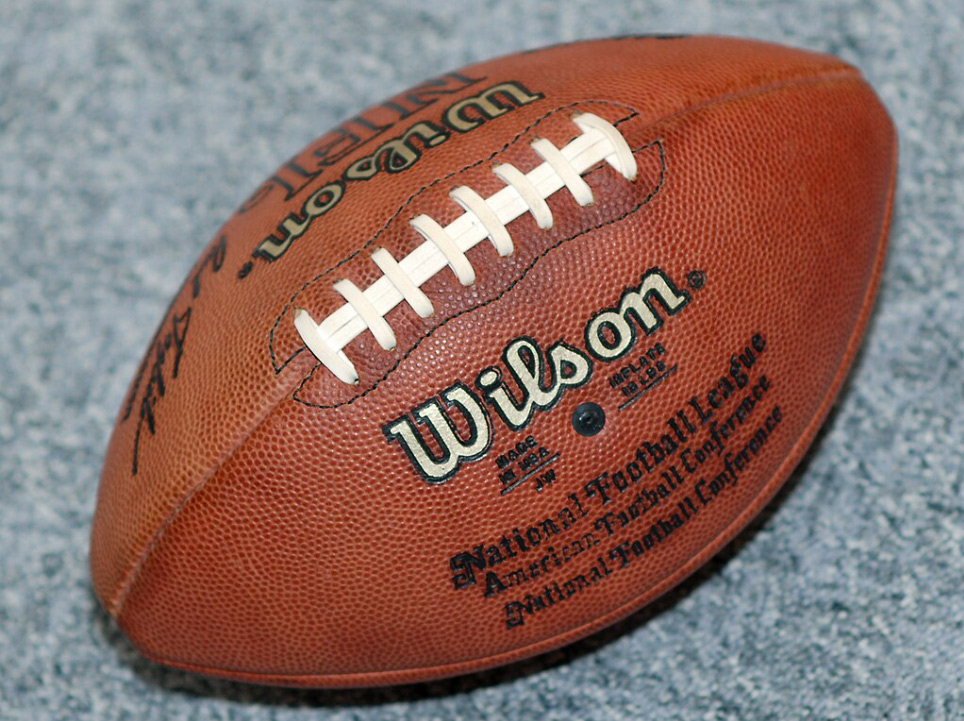
Regulations
In an NFL game, the home club must have 36 balls for an outdoor game or 24 for an indoor game, and they must be available for the referee to test with a pressure gauge two and a half hours before the game. Twelve new footballs, sealed in a special box and shipped by the manufacturer, are opened in the officials’ locker room two hours before the game. These balls are specially marked with the letter "K" and are used exclusively for the kicking game. The visiting team may also present 12 balls to the referee for outdoor games for inspection.
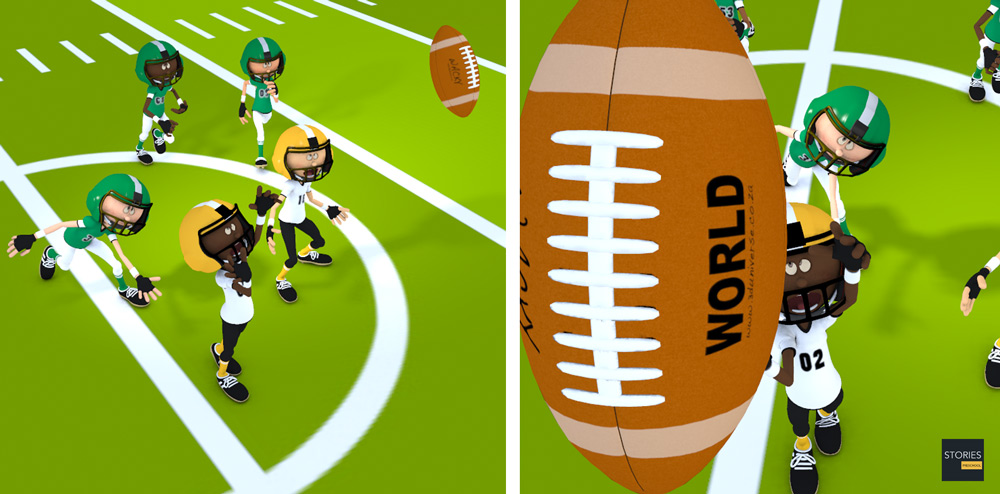
Protective Equipment in Gridiron Football
Protective equipment in gridiron football ("football gear") consists of equipment worn by football players for the protection of the body during the course of a football game. Basic equipment worn by most football players include helmet, shoulder pads, gloves, shoes, and thigh and knee pads, and a jockstrap or compression shorts with or without a protective cup. Neck rolls, elbow pads, mouth guards, hip pads, tailbone pads, rib pads, and other equipment may be worn in addition to the aforementioned basics.
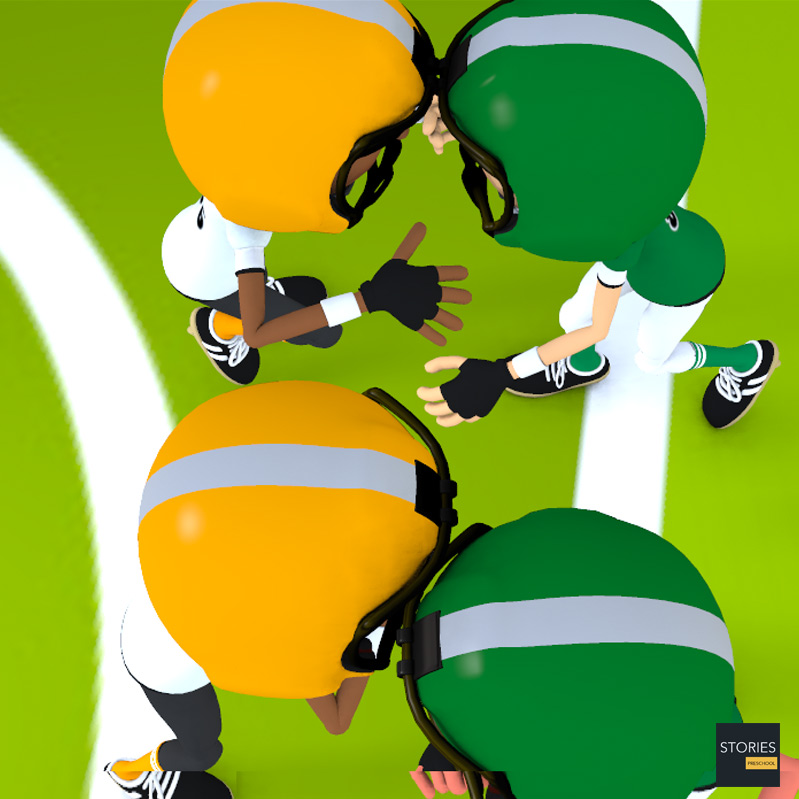
Football protective equipment is made of synthetic materials: foam rubbers, elastics, and durable, shock-resistant, molded plastic. Football protective equipment has remained consistent in use for decades with some slight modifications made over the years in design and materials. The assignment and maintenance of football gear belongs to the team equipment manager.

Helmet
The professional football helmet consists of several distinct parts: the sheep, jaw pads and abdomen bladders, face mask, chin strap, and mouth guard. The shell is constructed of hard plastic with thick padding on the inside, a face mask made of one or more metal bars, and a chinstrap used to secure the helmet. Helmets are a requirement at all levels of organized football, except for non-tackle variations such as flag football. Although they are protective, players can and do still suffer head injuries such as concussion. Football helmets are painted in team colors and bear team insignia decals.
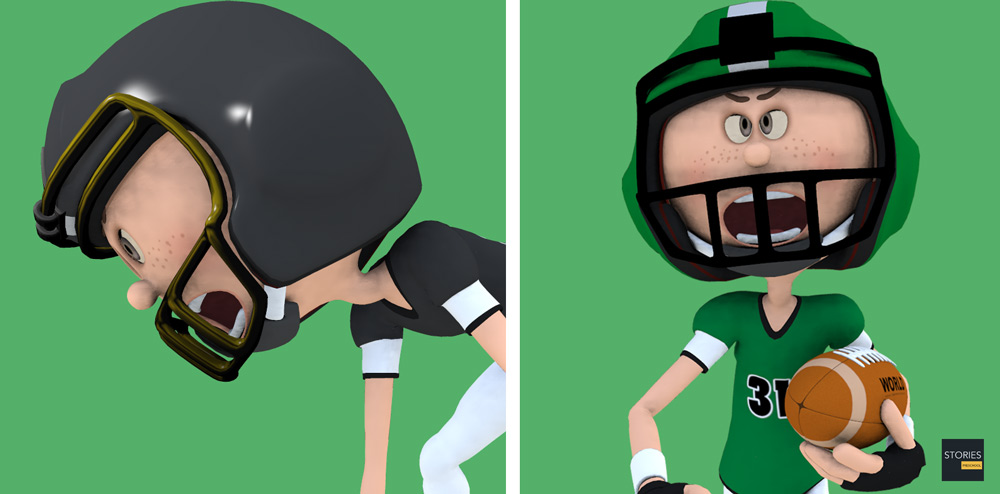
There are several styles of face masks and chin straps available. The selection is left to the player, with quarterbacks generally selecting more open masks with maximum visibility. Each position has a different type of face mask to balance protection and visibility. There are at least 15 different facemask styles. New design for the helmet includes an integrated faceguard featuring shock absorbing "Energy Wedges" that reduce the force of impacts to the faceguard.
A recent addition to the football helmet is a visor or eye shield, traditionally used to protect players from eye injuries or glare. Former Chicago Bears quarterback Jim McMahon was the first to wear a visor/shield. The visors started out as clear or smoked, but now come in colors ranging from blue, gold, black, rainbow, silver, or amber. The visor/shield is used at the player's discretion.
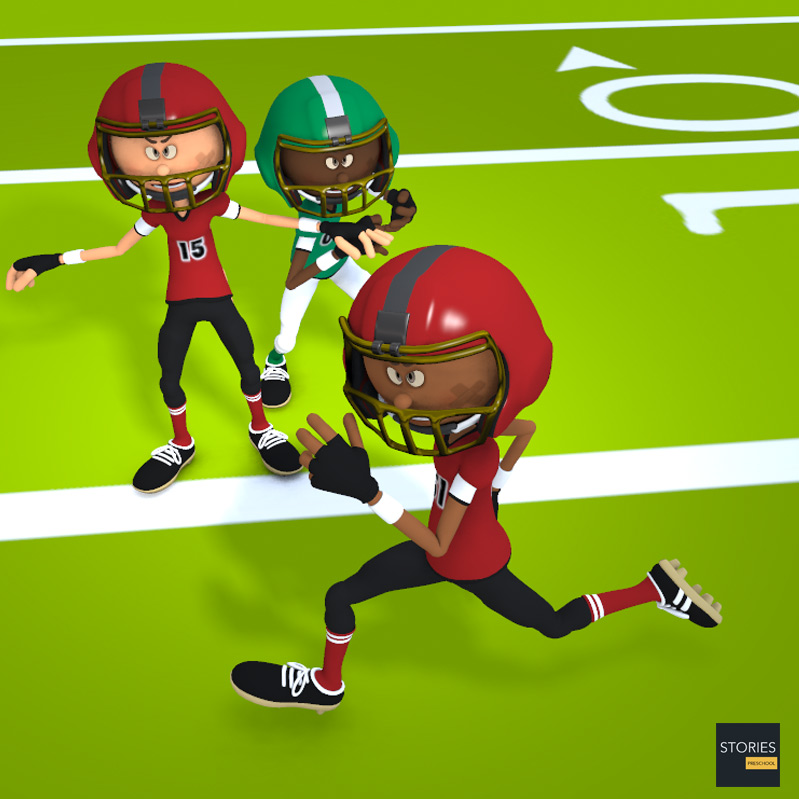
The helmet fitting process starts by measuring the player's head with calipers. Based on measurements taken, a helmet shell of the appropriate size and style is chosen. Then, padding is added to ensure that the helmet fits the player's head. Padding consists of both foam rubber pads and inflatable (air) pads. Both the top and side padding include inflatable bladders that customize the fit. Once the helmet is in place on the player's head, the inflater bulb is applied to two points on the outside of the helmet.
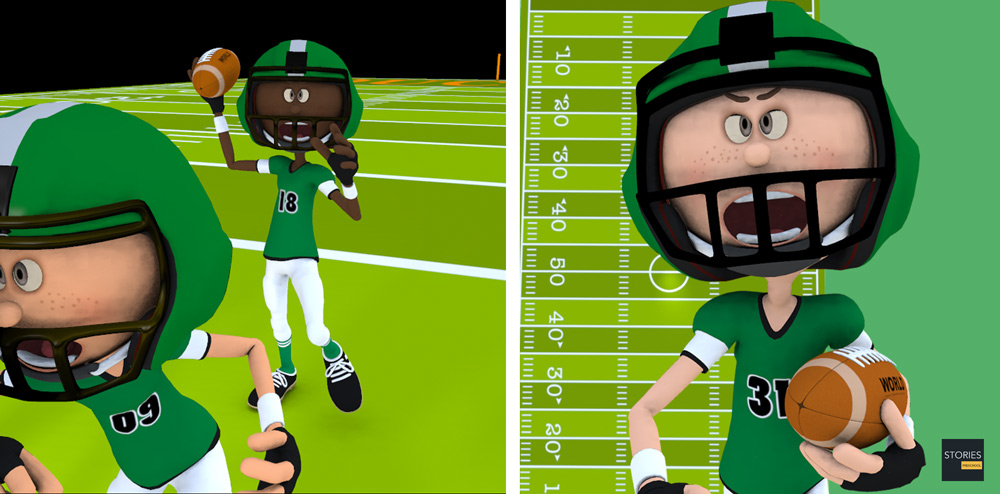
The jaw pads are fitted to ensure that the lower part of the helmet is snug against the player's face. The helmets that most NFL teams use are remarkably light, and once the pads are in place, there is no movement or shifting on the player's head.
Shoulder Pads
The shoulder pads consist of a hard plastic outer shell with shock-absorbing foam padding underneath. The pads fit over the shoulders and the chest and rib area, and are secured with various snaps and buckles. Shoulder pads give football players their typical "broad-shouldered" look, and are fitted to an adult player by measuring across the player's back from shoulder blade to shoulder blade with a soft cloth measuring tape and then adding 1/2 inch. For comfort, shoulder pads are sometimes worn in conjunction with a shoulder pads cushion of foam rubber over a cotton half-tee.
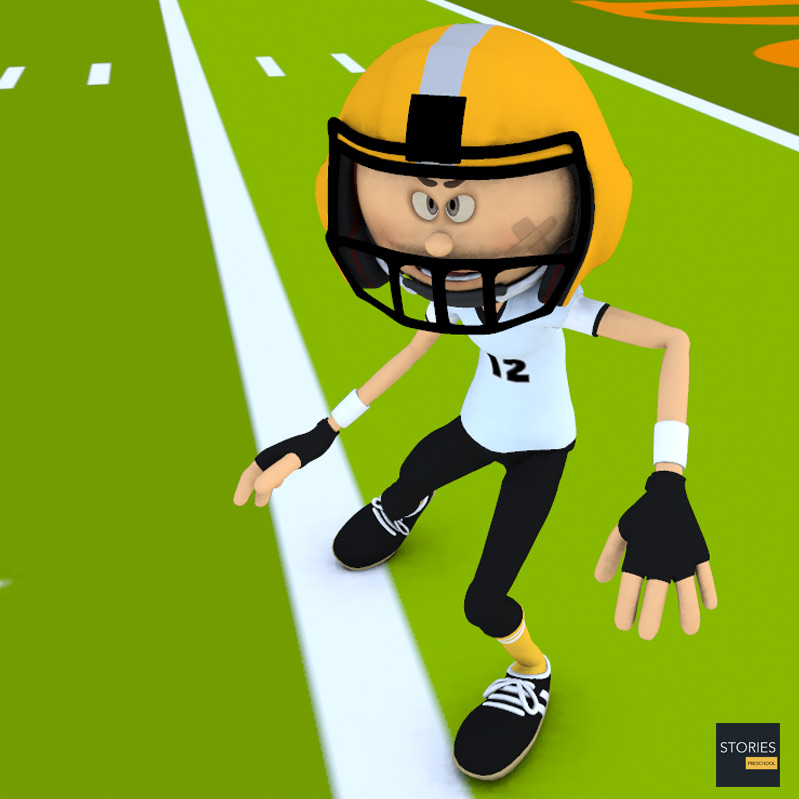
Shoulder pads accomplish two things for a football player: (1) they absorb some of the shock of impact through deformation. The pads at the shoulders are strung on tight webbing and deform on impact, and (2) they distribute the shock through a larger pad that is designed to regulate players' body temperatures during games and practices and protects against injury.
Jockstrap, or Athletic Supporter
A typical jockstrap used in football is constructed of a wide elastic waistband with a support pouch of cotton/elastic to contain the genitals. Two wide elastic straps affixed to the base of the pouch and to the left and right sides of the waistband at the hip complete the jock. The pouch, in some varieties, may be fitted with a pocket to hold an impact resistant cup (protective cup) to protect the testicles and penis from injury. Many youth football players, such as the Pop Warner leagues, are often required to wear a protective cup. However, they are now not worn as often at the high school, college, and peewee level, although still highly recommended. The jockstrap is the one piece of equipment used in football that predates the sport itself. In 1874, Charles Bennett of the Chicago sporting goods company, Sharp & Smith, created the "bicycle jockey strap" for bicycle riders (or, bicycle jockeys as they were then known). Other athletes adopted the jockey strap in their sports. A mass marketing in 1902 claimed the garment, now termed an "small comforter" was "medically installed" for all males that engaged in sports or harmful activity.
Jerseys and Pants
The main purpose of these two garments is to identify the player by name and number, and by his team colors.
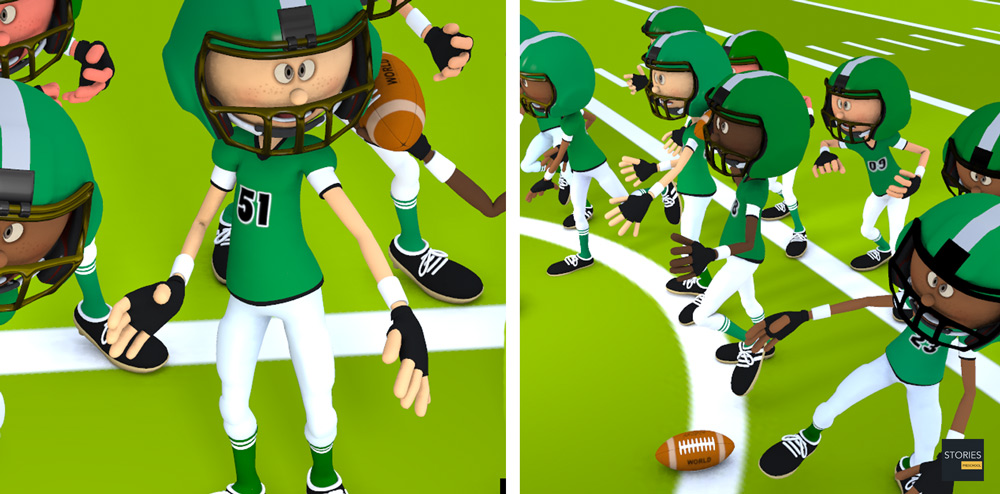
Jerseys. The front and back of the jersey are usually nylon, with spandex side panels to keep it taut. The goal is to make it difficult for an opposing player to grab hold of the jersey and use it for leverage. To help this process: Jerseys have an extension at the bottom that wraps around from front to back to keep the jersey tucked in. Jerseys have a wide strip of Velcro at the rear that mates with Velcro inside the waistband of the pants. Many players apply two-sided carpet tape to their shoulder pads so that the jersey sticks to the pads. The players individually choose which of these features (if any) they will use. Each professional football player is usually equipped with a set of practice jerseys as well as four game jerseys. Players will change jerseys at half time if it is raining. Jerseys will usually have a variety of patches affixed to the shoulders or other parts of the garment. Patches may depict the American flag, the team logo, or other significant information.

Pants are manufactured in nylon and mesh (for hot weather practices), and nylon and spandex for a tight fit (with team colors) for games. Most pants are manufactured with the traditional lace-up fly as a zippered fly is impractical and subject to damage due to stress in the rough and tumble of the game. The interior sides of the pants legs contain four individual pockets to hold two thigh pads (one for each leg) and two knee pads. The pads are placed in the pockets before the pants are put on in the locker room. The pants are secured with a belt, sometimes with a traditional metal buckle or with several rings. Game-used jerseys and pants are sports collectibles, with those of celebrity athletes realizing high sums.
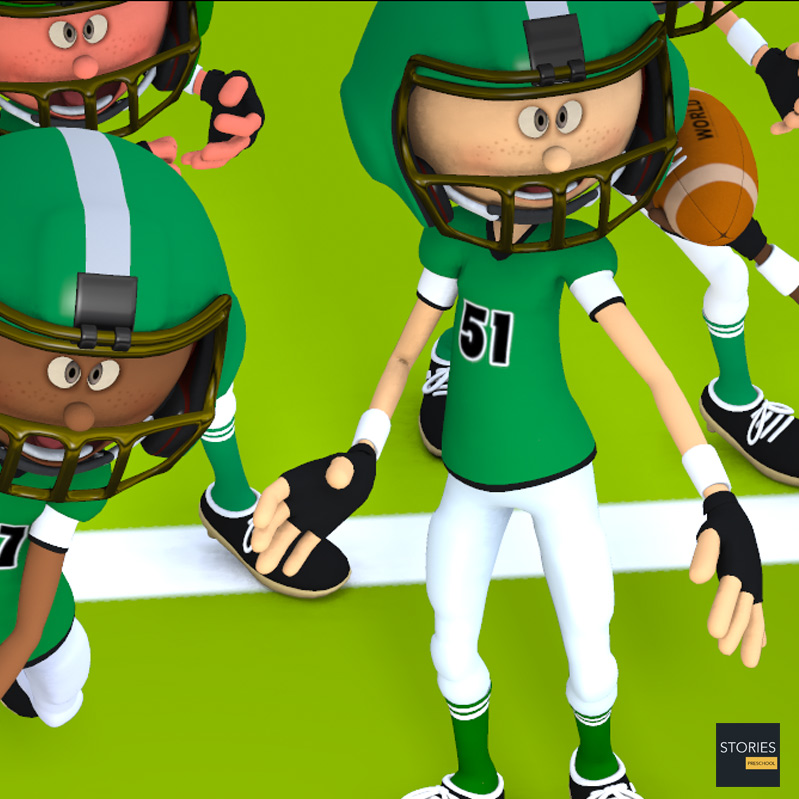
Footwear
Similar to soccer cleats, gridiron football shoewear have soles that consist of spikes called "cleats" purposefully designed for games on grass. Some cleats have removable cleats that can be screwed into specific holes. Cleat sizes are changed, depending on the conditions of the field (longer cleats provide better traction on a wet field, shorter cleats provide greater speed on a dry field). Flat bottomed shoes, called "turf shoes," are worn on artificial turf (specifically AstroTurf due to the lack of soil that causes friction and grip in artificial fields.
SPORTS
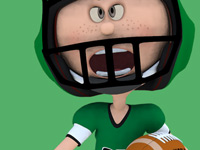
RESOURCES
This article uses material from the Wikipedia articles "American football", "American football rules", "Ball (gridiron football)", "Protective equipment in gridiron football" which is released under the Creative Commons Attribution-Share-Alike License 3.0.
© Stories Preschool. All Rights Reserved.
